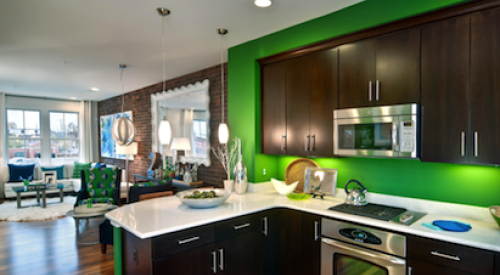|
If you're down in the dumps as you read this, it's easy to understand. Most housing markets are the pits, and knowing this malaise is unrelated to the general state of the overall economy doesn't really help. But what might perk you up is the silver lining one of America's most successful builders sees on that black cloud hanging over your head.
 Bob Toll, Chairman, Toll Brothers |
"We'll meet our long-term goal," he says, "which is to average 15 percent to 20 percent expansion annually. We've done that for 20 years. It looks like we'll be going backward for the next year. ... I don't know how long this will last, but my guess is that when the market comes back, it will be hotter than ever. There'll be a lot of pent-up demand. We'll see new housing forms and new approaches because the market will change during this slowdown.
"Population growth isn't taking a breather. Immigration isn't either. The only thing taking a break is the acquisition and entitlement processes for land to build on. There's an interruption on the supply side of the equation," Toll reasons, "but not in demand. The only thing slowing demand is lack of confidence in the price."
Toll believes investor-driven price escalations caused markets to crash and buyers won't return until they're sure home prices have bottomed. "They're being encouraged to stay on the sidelines by all the media coverage of declining home prices," Toll says. "It takes guts to buy a house today. Imagine a guy going to a cocktail party and telling everyone, 'I just bought a house!' He'd get beat up by people telling him he's a sucker.
"Our target market of wealthy professionals hasn't gone away. People still have the money and the desire for our product. But nobody wants to get shafted on price."
Density Will Drive ItToll already has made one strategic decision he believes will pay off when the next boom emerges — diversifying into many new housing forms to hit niche market segments far removed from the traditional suburban move-up homes that have always been his specialty. "Demand was already fragmenting," he says. "We believe that will continue. We want to meet affluent Americans' demand for luxury homes, no matter where it takes us and what type of product we have to build."
Density is a big part of Toll's new strategy. The firm is now building mid-rise and high-rise condo developments in urban centers and near suburban downtowns. That allows it to again sell at the $400,000 price point, which it can no longer reach with big detached homes on large lots. "None of the other public builders are doing infill on the scale we are," Toll says. "We've made a commitment to build luxury housing in all its various forms — such as active adult and resort communities, for example. And a segment of our target market is now attracted to living near urban and suburban downtowns. That takes us into mid-rises and high-rises."
Asked if rising gasoline prices play a role in growing demand for housing closer to jobs and entertainment, Toll discounts it. "Logically, you might think that," he says. "But historically, it's never happened. Our energy costs are still so much less than in Europe, where they sell gasoline by the teacup. My guess is this latest run-up in gas prices will cause a lot of talk, but not much change in consumer behavior. The fact people want to live in the city has more to do with lifestyle than it does with commuting costs."
No Love For DiscountingPublic home builders have been the most aggressive discounters in many markets, but you won't find Bob Toll favoring that approach, especially when it involves advertising discounted prices in the newspaper and on radio or TV. "I don't mind anyone using discounts to move excess inventory," he says, "but I am critical of builders who have discounts as the primary come-on in their ads. We may advertise a special mortgage rate along with the lifestyle of the community and beauty of the homes. And we may say this is a great time to buy — which it is.
"But advertising discounts negatively impact consumer sentiment. It tells people that the house you just sold them last year was overpriced — you got taken. It says, 'Don't you wish you were buying today instead of last year?' It's not just prospects who see those ads. The people living in your communities see them, too."
Lucrative Part-Time Job  |
Forbes magazine's ranking of America's highest-paid public company CEOs, published last spring, shows Bob Toll at No.16 with an annual compensation of $41.31 million. Not bad for a guy who actually took a pay cut last year.
"I did that because what I was entitled to was inflated by all the price appreciation in the marketplace," Toll says. "I didn't think it was sustainable, and I didn't think my compensation should go up and down like a ping-pong ball. It wouldn't have been fair, and it wouldn't have looked right — so I cut my salary and options."
Of course, Bob Toll is also the company's largest shareholder. Forbes listed the value of his stake at $674.7 million. He's doing well, considering Toll rarely works more than three days a week. At age 65, he admits he's enjoying life.
He spends the most of his summers in Maine and winters in Telluride (Colo.), traveling between the two throughout the year. In the fall and spring he heads to New York and Bucks County, Pa. "We travel a lot," he says. "I'm still working really hard when I'm working, but I'm taking a lot of time off."
Toll still puts in 14 hours at the office on Mondays, capped by the marathon land acquisition meetings that always keep Toll's executive team away from Monday Night Football. "On Tuesdays, I'm there for about nine hours," he confides. "In the winter, I often work about three to four hours on Thursday and Friday before skiing. In the summer, I've been taking that time off since 1986, which is the year we went public. I used to just take two weeks of vacation to ski in the winter, but now I go back and forth."
Toll is unapologetic about his high level of compensation. "The pay of CEOs for public home builders is not out of line with other companies that do similar volume," he maintains. "We do $100 million deals every week, which is what you'd expect in a $6 billion company. We just bought $300 million worth of dirt in Arizona with a couple of other companies. It was the biggest land purchase in Arizona history.
"Home building companies of this size take a fair degree of experience, sophistication and intelligence to run. The salaries we earn are not out of whack with the decisions we have to make."
That seems fair enough, especially since Toll, at No.16, is the fourth home builder on the Forbes list. Bruce Karatz of KB Home is No.4 at $135.53 million a year. Chad Dreier of Ryland Homes is No.12 at $56.47 million. And Ara Hovnanian is No.14 at $47.83 million a year.
| ||||||||||||||||||||||||||












